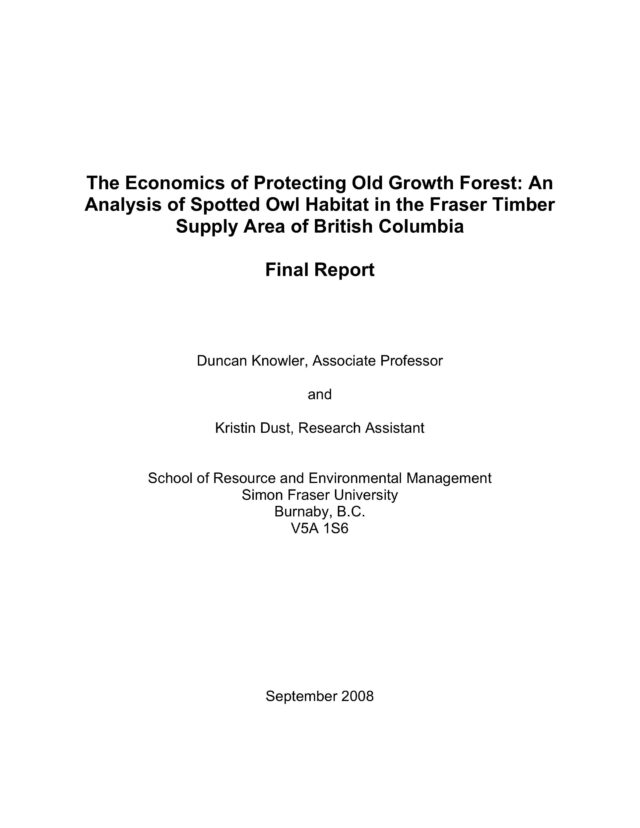The Economics of Protecting Old Growth Forest: An Analysis of Spotted Owl Habitat in the Fraser Timber Supply Area of British Columbia
Authored by:
Duncan Knowler,
Kristin Dust
Partners:
Simon Fraser University School of Resource and Environmental Management
Biodiversity owls, conservation, economics, species at risk, British Columbia, land use, industry, sports and recreation, forests
This document is a detailed economic study of forests inhabited by the endangered spotted owl. The study, led by Duncan Knowler, an associate professor at Simon Fraser University’s School of Resource and Environmental Management, looks at the economics of protecting old-growth forests inhabited or known to have been home to the spotted owl, one of the most endangered forest-dwelling bird species on the North American continent.
The goal of this study was to take a first step toward a rigorous examination of the main land-use options for coastal old growth forest with the intent of determining which one is optimal for society. Its authors do not estimate the value of all costs and benefits associated with the different land-use options; instead, they focus on estimating the forest values related to timber, non-timber forest products, recreation and carbon sequestration/storage. They do not attempt to estimate other ecosystem services such as watersheds, nutrient cycling and control of soil erosion. The report assesses the opportunity costs of preservation of old growth forests with adjustment for these selected potential benefits from preservation. As such, the study is concerned with spotted owl conservation but not exclusively so. The study considers a specific forest area, the Fraser Timber Supply Area, which is in southwestern British Columbia to the east and northeast of Vancouver.
The results suggest that under a broad range of parameter assumptions there would be a net benefit rather than an opportunity cost associated with increased preservation of old growth forests. In other words, the benefits of preservation in terms of increased recreational opportunities, non-timber forest products and carbon sequestration and storage outweigh the costs in terms of lost producer surplus from timber harvesting.
A short summary of this report, Dollars and Sense: The Economic Rationale to Protect Spotted Owl Habitat in B.C., is also available.
